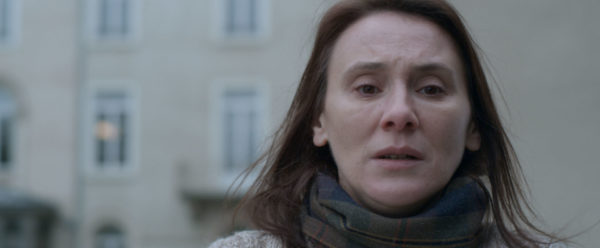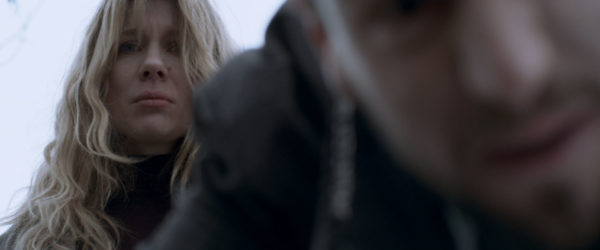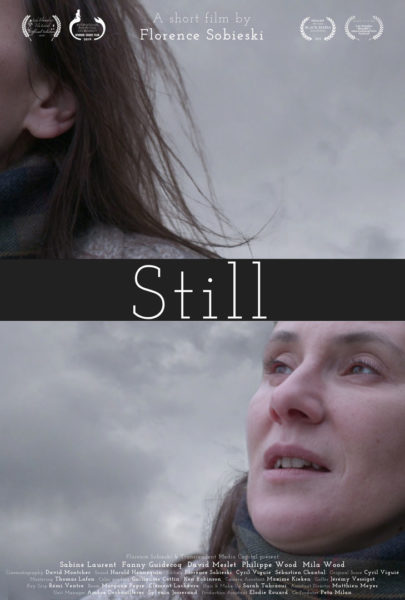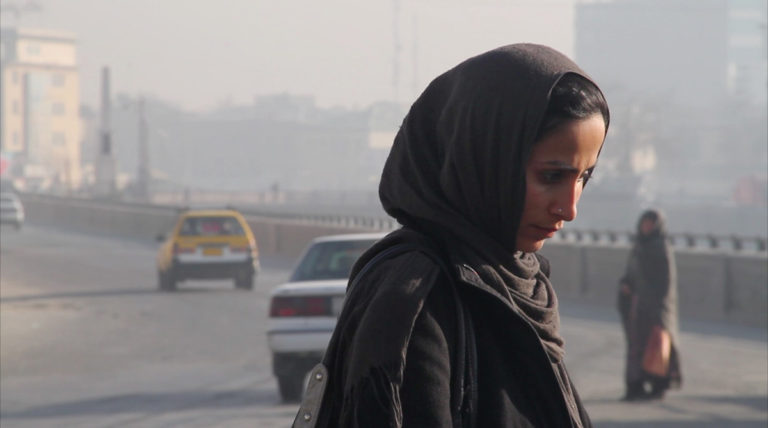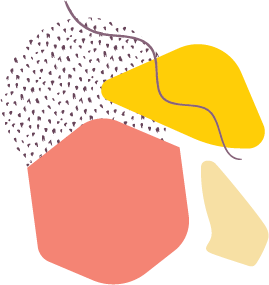STILL was conceived as a sensory experience, a short film in which the emphasis is on the cinematic transposition of a few precise feelings, of a brief but disruptive small event and a strongly identified sound and visual atmosphere.
It tells the story of two individuals that are somehow trapped in their lives: Agnes in her own body, Elodie in an abusive relationship. But the narrative remains very minimalist since the film develops mostly around one central theme: the feeling of powerlessness, whether physical or psychological.
We adopt the viewpoint of Agnes, the main character, and the frame tightens or widens according to what she focuses on. Still shots were used to convey both her forced physical immobility and the stifling nature of the situation -she is, by accident, the helpless witness of violent domestic abuse.
The sound treatment and sound design also aims at conveying a sense of suffocation. The sound designer/composer and myself decided to create a drone music-inspired soundtrack based on the background sounds recorded on set. The circular and repetitive nature of this soundtrack is meant to express a sense of imprisonment. Sound is also reflecting Agness own perspective: as the couple stands far from her, the audience, just like Agnes, cannot hear all of the dialogue that goes on between Elodie and her partner, only bursts of it.
“Still” recounts an act of violence committed in a public space. Something that is sadly far from being rare: whether a child being violently reprimanded, a dog beaten by its master or someone abused verbally or physically by his or her partner, we have all witnessed such situations, we have all known the moral anguish that they provoke. Where does the private sphere stops? Are we entitled to say or do something? And, most importantly, do we have the strength to do it?
It is so easier and tempting to go on ones way and forget about it all. This profound embarrassment, shame even, is something that I find both horrifying and fascinating. I have myself witnessed people passing by a dead man in the street. He was lying under a bench, looking like a homeless person, looking also very dead -or at least in a coma-, his body in a weird, unnatural position. I was the first to stop, to see if any help was needed, or if there was nothing left to do but call the police. Then, and then only, other people stopped. That day, I felt really affected, not because I had dealt with a dead body but because of the utter and widespread indifference I had witnessed.
I had intervened, yet it was easy: there was no danger. So what happens when there is one? When helping someone could mean putting oneself in harms way? I am not sure I myself would do the right thing. Almost as an exorcism, I wished to touch on this subject of general indifference in “Still”. For to me, who finds it in him or her to act, is a true ordinary hero, of the kind we need to glorify.
